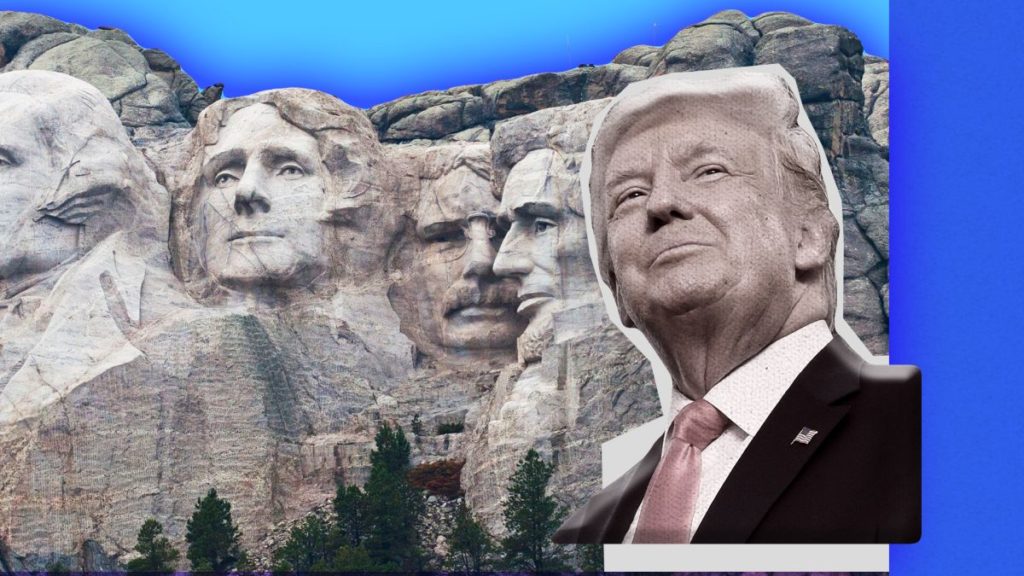The Long Lakota War

Nick Estes has a typically good piece placing the resistance of Nick Tilsen and other Lakotas to Donald Trump’s visit to Mt. Rushmore in the context of the long struggle of the Lakotas for the Black Hills.
Tilsen is the president and CEO of NDN Collective, a Native-run nonprofit based in Rapid City, South Dakota, which launched a campaign on Indigenous Peoples’ Day in 2020 to return He Sapa to Native people. Many Lakota people, like Tilsen, view the national monument, which attracts 2 million visitors a year, as a desecration of a spiritual landscape. “What South Dakota and the National Park Service call ‘a shrine to democracy’ is actually an international symbol of white supremacy,” Tilsen said. He was among 20 arrested for protesting Trump’s visit. If convicted, he faces up to 16½ years in prison for four felonies and three misdemeanors.
According to Tilsen, the protesters had negotiated the blockade with the Pennington County Sheriff’s Office and the South Dakota Highway Patrol. The activists blocked the road, using three disabled vans to bar the way. “It was to hold space and connect our issue to the world,” Tilsen explained. Tilsen and others worked throughout the day to keep the protests organized, even speaking directly with park authorities to ensure that elderly activists and children were allowed to move away before any arrests were made. Soon, deputies announced that the assembly was unlawful, and the Air National Guard moved in, dressed in riot gear, pushing the protesters back and firing pepper balls at the retreating crowd.
“A lot of the protectors had coup sticks, eagle feathers, and (sage) smudge sticks — and everything that you could think of that was sacred to us,” Laura Ten Fingers, one of the young Lakotas who helped organize the protest, recalled. A group of Trump supporters stood behind the police line, she said, shouting at the crowd “to go back to where you come from.” “It was really heartbreaking to hear them to say, ‘Go back,’” she said. “He Sapa was our home, and we came from there.”
During the confrontation, Tilsen took a National Guard riot shield. He was arrested and charged with felony theft and robbery. When the shield was returned, the word “POLICE” had been spray-painted over and replaced by the slogan “LAND BACK.” That slogan put the Black Hills at the center of a movement whose unequivocal demands are rooted in a long, hard-fought history.
Trump’s visit to Mt. Rushmore was not only an exercise in fascism, but it also very much reflected race relations in South Dakota, where the white population is as racist as anything Mississippi or Alabama can offer. It’s just that the target is the state’s large Native community instead of being anti-Black racism, so it gets a lot less attention from even progressive Americans than it would otherwise. For Governor Kristi Noem and her voters and the Trumpists who dominate the state, the Black Hills is very much there’s and very much not the Lakotas, who they seen as drunken losers. Really, it’s a microcosm of all of American race relations in the Trump era and of course Tilsen is much more likely to serve time for his non-crimes than any Trumper is for their very real crimes.


